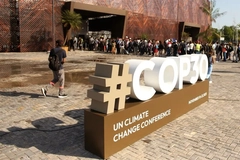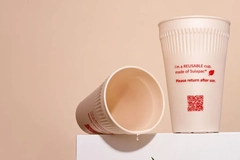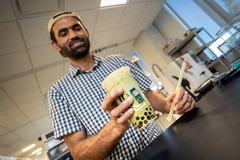World Premiere for Greiner Inert Barrier Technology
There are a number of techniques that can be used to help extend the shelf life of foods. In the dairy industry, for example, ultra-high-temperature processing and the addition of preservatives are popular options.
There are a number of techniques that can be used to help extend the shelf life of foods. In the dairy industry, for example, ultra-high-temperature processing and the addition of preservatives are popular options. Consumers have shown themselves to be more and more skeptical of both of these approaches. At the same time, however, they are demanding a long shelf life in order to limit food spoilage. With its inert barrier technology, Greiner Packaging International has found an answer to this conundrum.
An ultra-thin layer of silicon dioxide
Inert barrier technology takes advantage of the excellent properties of the chemical compound silicon oxide. An extremely thin layer of this material is applied to the inside of plastic cups. The technical conversion is done in the form of a plasma deposition process. The plastic cups are placed in a chamber, which is then placed under vacuum. An electrode inside the chamber then generates a plasma from injected oxygen and silicon-containing gas. This results in the application of a coating to the cups. The barrier coating and the plastic form what is called a "covalent bond".
Excellent properties
The silicon oxide layer is chemically inert and sharply reduces oxygen and moisture permeability. It increases the oxygen barrier by a factor of 20 compared to uncoated plastic PP cups. Compared to PS packaging, it's even better by a factor of 30. Inert barrier technology ensures optimal aroma protection and retains the smell and taste of the contents. It is not sensitive to fluctuations in temperature and humidity, and is also flexible and well-suited for pasteurization and sterilization. Inert barrier technology prevents the so-called 'retort shock' (a drop in barrier effectiveness). This increases the shelf life for foods without the addition of preservatives.
Sustainable and recyclable
The silicon oxide layer applied using inert barrier technology is around 500 times thinner than a human hair. It weighs practically nothing, and therefore has no impact on the packaging weight – an important factor with respect to logistics and CO2 emissions. Inert barrier technology also looks good in the areas of disposal and recycling. Coated packaging has been declared monomaterials and can simply be ground up. The grist is then re-used to produce new plastic cups.
Source: Greiner Packaging International











